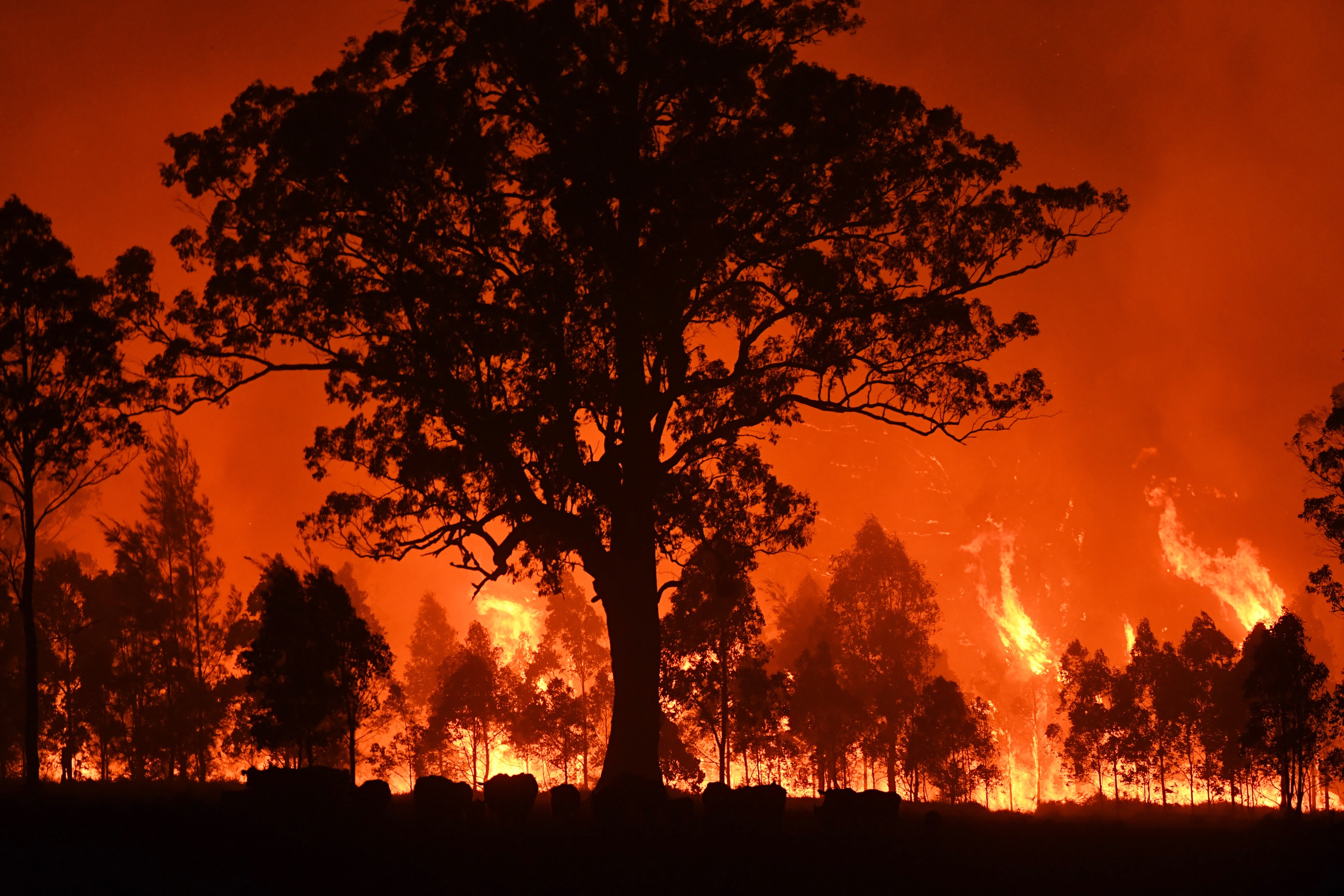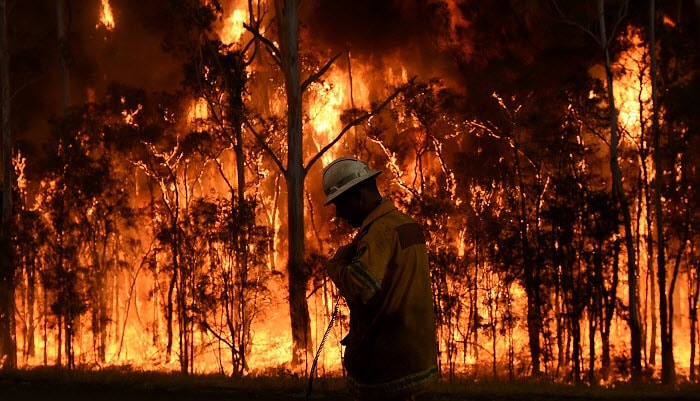Crafting Your Property's Safety and security: A Detailed Bushfire Management Plan Guide
Wiki Article
Important Tips for Bushfire Administration to Make Certain Fire Defense

Recognizing Bushfire Threat Levels
Recognizing the differing levels of bushfire threat is important for effective preparation and prep work in mitigating potential hazards to residential or commercial properties and lives. Bushfire risk levels are commonly categorized based on variables such as climate problems, fuel accessibility, topography, and historical fire actions. By understanding these risk individuals, degrees and areas can proactively implement methods to decrease susceptability and improve durability in the face of possible bushfire events.The first level of bushfire risk is reduced danger, where the likelihood of a bushfire happening and creating considerable injury is minimal. This level often takes place during durations of low temperature levels, moderate moisture, and very little wind speeds. Modest threat degrees indicate an increased potential for bushfires due to rising weather conditions or fuel schedule. Risky degrees signify a substantial risk, with conditions helpful to fast fire spread and severe fire behavior. Severe risk degrees are one of the most vital, presenting unavoidable threat to lives and homes due to severe weather condition problems and extremely combustible fuels.
Recognizing these bushfire danger levels allows stakeholders to tailor their preparedness and action activities appropriately, making sure a positive and reliable method to bushfire administration.
Establishing a Defensible Area
Reliable bushfire management starts with establishing a defensible area around homes to enhance defense against possible fire dangers. A defensible space is a barrier area that creates an obstacle in between a structure and the bordering flammable plants. This room works as a critical line of defense, offering firemans a safe area to run and assisting to reduce the danger of a fire spreading to the residential property.When developing a defensible room, it is essential to think about the design of the residential property and the surrounding landscape. Cleaning plants, especially extremely combustible plants, within a particular span of the residential or commercial property can assist stop the fast spread of fires. Additionally, preserving a well-irrigated area around the residential property can further improve its defensibility.
Regular upkeep of the defensible room is essential to guarantee its performance. This consists of cutting overhanging branches, removing dead plant life, and keeping the area free of debris. By investing effort and time into establishing and keeping a defensible space, homeowner can significantly boost their opportunities of securing their homes and possessions throughout a bushfire.
Implementing Fire-Resistant Landscaping
When developing landscapes to reduce the risk of bushfires, including fireproof components is crucial for boosting residential or commercial property defense and minimizing fire risks. Executing fireproof landscaping involves calculated planning to develop a defensible area around structures. Start by selecting fireproof plant varieties that are less likely to ignite and generate reduced levels of flammable materials. Select plants with high moisture content, low oil web content, and very little dead greenery to lower the threat of fire spread. In addition, maintain ample spacing between plants and maintain them properly trimmed to avoid fire from conveniently leaping in between greenery.
Creating an Emergency Situation Evacuation Strategy
Establishing a detailed emergency evacuation plan is critical for making sure the security and health of individuals throughout possible bushfire occurrences (BAL Assessment). An effective discharge plan should detail clear procedures to comply with in case of a bushfire risk, including assigned discharge routes, assembly factors, and communication proceduresTo begin producing an emergency situation evacuation plan, it is important to examine the specific risks and vulnerabilities of your place. Identify multiple evacuation routes that cause risk-free locations far from the fire, taking into consideration factors such as terrain, road availability, and potential risks. Establish interaction networks to sharp citizens of an approaching evacuation, using approaches such as alarms, text notifies, or door-to-door notices.
On a regular basis testimonial and exercise the discharge strategy with all homeowners or area participants to make certain everyone understands their duties and responsibilities. Conduct drills to check the efficiency of the plan and make any type of required modifications. By having a well-prepared emptying plan in position, you can improve the possibilities of a safe and organized evacuation throughout a bushfire emergency situation.
Maintaining Fire Safety And Security Tools
After establishing a detailed emergency evacuation prepare for bushfire cases, it is crucial to prioritize the normal maintenance of click over here now fire safety tools to make sure ideal functionality and preparedness. Normal maintenance of fire safety devices such as fire extinguishers, smoke detectors, fire alarm systems, and lawn sprinkler systems is important in securing lives and building during a bushfire. Performing routine examinations, screening, and servicing of these tools by qualified specialists is necessary to assure they are in functioning order when needed.Fire extinguishers must be examined on a regular basis for pressure levels, noticeable damages, and proper functionality. By carefully maintaining fire safety and security tools, people can boost their preparedness and response abilities in the occasion of a bushfire.
Verdict
In verdict, efficient bushfire monitoring entails next recognizing danger degrees, producing defensible spaces, applying fire-resistant landscaping, developing discharge strategies, and maintaining fire safety and security tools. By adhering to these essential pointers, people can make sure much better fire defense and safety for their communities and buildings. It is crucial to prioritize proactive actions to minimize the risks connected with bushfires and to be prepared for emergencies.By understanding the subtleties of bushfire threat levels, establishing defensible rooms, carrying out fire-resistant landscaping, developing extensive discharge plans, and making certain the upkeep of fire safety tools, neighborhoods and people can dramatically strengthen their resilience versus the ravages of wildfires - BAL Report. These pointers are not only vital for safeguarding against prompt fire dangers but also for cultivating long-term fire protection approaches that can make a significant difference in the face of escalating bushfire hazards
High-risk degrees represent a substantial risk, with conditions conducive to rapid fire spread and severe fire actions. Normal upkeep of fire security tools such as fire extinguishers, smoke detectors, fire alarm systems, and sprinkler systems is important in safeguarding lives and residential property throughout a bushfire.In verdict, effective bushfire here are the findings monitoring involves understanding risk levels, creating defensible spaces, executing fireproof landscaping, establishing discharge strategies, and keeping fire security equipment.
Report this wiki page